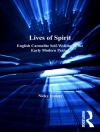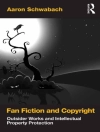This book examines the construction of adolescent girlhood across a range of genres in the closing decades of the nineteenth century. It argues that there was a preoccupation with defining, characterising and naming adolescent girlhood at the fin de siècle. These ‘daughters of today’, ‘juvenile spinsters’ and ‘modern girls’, as the press variously termed them, occupying a borderland between childhood and womanhood, were seen to be inextricably connected to late nineteenth-century modernity: they were the products of changes taking place in education and employment and of the challenge to traditional conceptions of femininity presented by the Woman Question. The author argues that the shifting nature of the modern adolescent girl made her a malleable cultural figure, and a meeting point for many of the prevalent debates associated with fin-de-siècle society. By juxtaposing diverse material, from children’s books and girls’ magazines to New Woman novels and psychological studies, the author contextualises adolescent girlhood as a distinct but complex cultural category at the end of the nineteenth century.
Tabla de materias
Introduction: Debating and Defining Adolescent Girlhood at the Fin de Siècle.- 1. Classifying Girlhood, Creating Heroines: Aspiration, Community and Competition in the
Girl’s Own Paper and the
Girl’s Realm.- 2. Making Transitions in fin-de-siècle Girls’ School Stories, 1886-1906.- 3. ‘Flowering into womanhood’? The New Woman and the New Girl.- 4. ‘Development and Arrest of Development’: Sarah Grand’s ‘Girls of Today’.- 5. Professionalizing the Modern Girl: Ella Hepworth Dixon, W.T. Stead and Journalism for Girls.- Coda: Voyaging Out.- Bibliography.- Index.-
Sobre el autor
Beth Rodgers is Lecturer in Nineteenth-Century Literature at Aberystwyth University, UK. She has published articles on Victorian girls’ literature and culture and is co-editor of
Children’s Literature on the Move: Nations, Translations, Migrations (2013), which received the Children’s Literature Association’s honour award in 2015.












